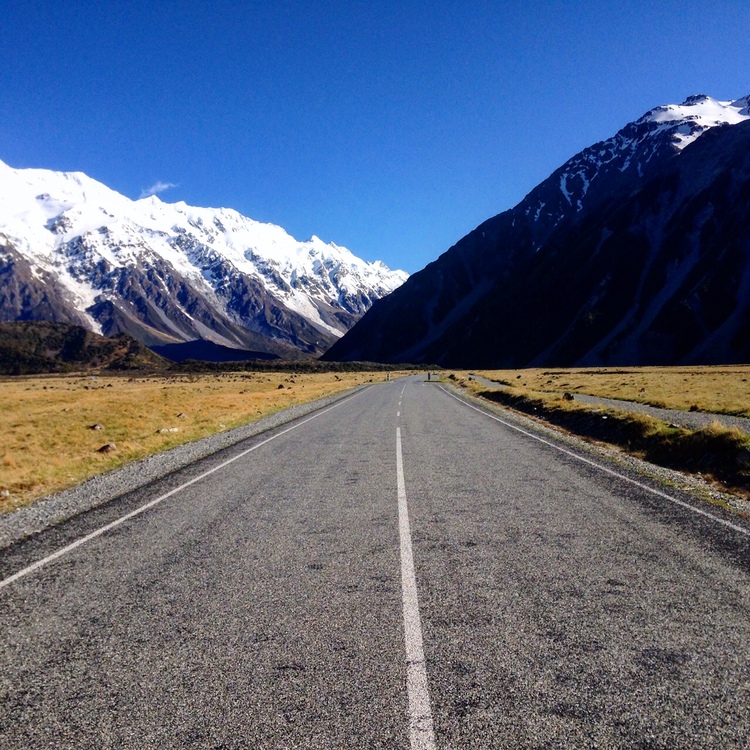How to Travel on a Post-Grad Budget, Part 1
[This post was last updated on August 6, 2018.]
It is 180,000% possible to travel on a post-grad budget, and I will defend this statement in a manner that is borderline aggressive.
The world wasn’t meant to be admired from a stock desktop wallpaper; it was meant to be experienced. This is another statement that I will defend in a manner that is borderline aggressive.
But traveling isn’t always easy on entry-level wages. Here’s how to see the world without breaking the bank.
>> PART 1: Planning Your Trip
1. Budget.
Before we even begin discussing budgeting for travel, you must first know how to budget your money for all general life expenses. This post from the Windrose blog and the blog The Financial Diet are good places to start when learning how to manage your money.
I also think in discussing budgeting money for travel, it’s necessary for me to be transparent with my own income and expenses to explain how I go about budgeting for travel. As I wrote this, after I pay rent and other bills, I have about $900 per month to do things like feed and clothe myself and feed (but not clothe) my Poodle and kitten. After I budget for gas and groceries and overpriced vet bills and mochas, I’m left with around $300. That $300 could get me some of those oversized, blanket-like cardigans from Target that make you feel like you’re being embraced by heaven itself.
But here’s where the self-control that is required of adulthood comes into play: I don’t (usually…) spend that extra money on Target clothes; I put it away into my savings, set aside specifically for travel.
June 2017 update: I cut my income by more than 50% this year when I took a new job, but I still still able to travel to London and Norway. I can now back up my claim that it is entirely impossible to travel on any income.
It’s about making travel a priority.
If travel isn’t a priority when it comes to creating your budget, then you will never have enough money to do so no matter how much you make, because there will always be some other material thing that you just have to have.
So when creating your weekly or monthly budget, earmark money specifically for travel, even if it means foregoing all those Target cardigans.
Once you’ve made travel a priority, it’s equally important to create a budget specifically for your travel destination once you’ve decided on where you’d like to go. Having a firm monetary goal will make it easier to save.
When creating your travel budget, keep the following in mind:
- Flight or Gas Money
- Transportation costs at your location (rental car, taxi, public transport)
- Food and beverage costs
- Attraction costs (concerts, museums, tours, etc.).
Once you’ve set a travel budget, save more than you think you’ll need in case you actually end up spending more than you anticipated. I usually save around $100 more than what I’ve budgeted for originally. You don’t want to constantly be checking your bank account on your trip for fear that you’re driving yourself into debt one crepe at a time, so leave some wiggle room.
Important: Take into account the exchange rate of your destination if you’re traveling outside the country. I budgeted $700USD for food, transportation and other expenses (barring flight and accommodation) for my two weeks in London, which seems like a lot (because it is a lot), but in 2015, that really only came to about £460 - or around £32 per day. Exchange rates can be killer.
2. Get a second job.
“Getting a second job” doesn’t mean “work 80 hours a week and give up any thought of having a social life whatsoever.” It can be as easy as occasional babysitting or picking up a freelance job on the side that only requires a few hours of work per week. I don't make tons of money off of my freelance writing work (Update August 2018: I freelance full-time now) and babysitting, but that extra $200 a month could cover the cost of a domestic plane ticket.
Updated June 2017: Consider puppy snuggles as a favorite past time? Consider dogsitting and dogwalking through a service like Rover.com. I signed up in May and have made $500 in two months! This has basically funded my trip to Norway.
3. Purchase airline tickets wisely.
This will likely be your biggest cost, so don’t just buy the first airline ticket you see.
Use the right internet tools.
- Google Flights offers you the option to search for flights to a variety of destinations at once from your desired origin airport. You can narrow your search by region, months, and even by how long you'd like to stay, like a weekend or a week. Google Flights is my bff.
- Use Kayak to compare prices between airlines during the dates you want to travel. Kayak offers an email alert option which will send you a daily email of airfare to your destination, allowing you to snag your ticket when the price dips. Kayak Explore is a map tool to compare prices to multiple destinations from your origin airport depending on the budget you set.
- Take advantage of Southwest’s regular fare sales (helloooo $98 roundtrip ticket to New Orleans); it’s worth it to sign up for emails from the airline.
- Sign up for airfarewatchdog emails, which will send you daily emails of airline costs to a variety of destinations from whichever origin airport you choose. Follow @airfarewatchdog on Twitter, as well, as they regularly tweet fantastic airfare deals.
- Skyscanner is another flight price comparison tool. I receive daily email alerts with flight prices.
Prices to Europe this summer (2015) went down to unbelievably low, I’m-obligated-to-purchase-this-ticket prices, where I was able to snag a ticket to London from Dallas for around $670 roundtrip. I noticed the low fares from following @airfarewatchdog, then I used Kayak to compare prices from different airlines before making my purchase.
Updated April 2018: I thought $670 was a cheap ticket, but in April 2017, I flew from New York to London for $471 roundtrip on British Airways. In June 2017, I flew from Boston to Oslo, Norway for $369 roundtrip and then from Boston to London for $369 roundtrip in March 2018 on Norwegian Air. I found these tickets thanks to emails from airfarewatchdog and Skyscanner that alerted me to the low prices in a date range. I then used Google Flights and Kayak to find the cheapest flight for my desired dates. International trips are absolutely accessible right now, even to those on a budget.
Consider flying directly out of airports in major U.S. cities.
This may mean driving to a different city, but this could save you an entry-level paycheck amount of money. For instance, it costs about $400 more to fly out of Nashville to most international destinations than it does to fly out of Dallas, Boston, or New York. So even though it might mean driving or flying to another city, saving $400+ on airfare is worth the extra effort. So when searching for airfare to an international location, include nearby airports in major cities in your search. There is almost always a cheaper option than flying out of regional airports in smaller towns.
For instance, Norwegian Air offers incredibly low international airfares out of airports like Boston. The last couple of times I've gone abroad, I flew Norwegian out of Boston and purchased a ticket from Nashville to Boston on Southwest, with total airfare only a bit more than $500 roundtrip.
Get creative about getting to your destination.
Looking to go to Italy but prices are a bit steep? Consider flying to another major European destination, like Paris or London, and then taking one of Europe’s low-cost airlines, like Ryanair or easyjet to Rome. This same tip applies to any European destination! Use Google Flights to look up prices to Europe from your airport. Find the cheapest destination city, then look into what the cost would be to take a low-cost airline to the city you're ultimately hoping to visit. That's what my friend, Kendall is doing this May 2018, flying from the U.S. to London, then taking a budget airline to Venice.
The same can apply to domestic flights in the U.S., too. For my trip to Arizona in December 2015, I found a flight on American Airlines that had an overnight stopover in Dallas—giving me an opportunity to spend an evening with my friends there—with an early flight to Arizona the next morning for about $100 cheaper than what it would’ve been to fly directly from Nashville to Phoenix in one day.
While it does take more time researching flights, getting creative with both outbound and inbound cities could potentially save you hundreds of dollars.
Use airline vouchers.
Did you know you can purchase gift cards for airlines like American Airlines and Southwest (and likely other airlines, too)? You can. This is a very real thing. What a great Christmas gift request, am I right or am I right? (*hint, hint to friends and fam reading this*)
4. Take advantage of frequent flyer programs.
I’ve been a member of American Airlines’ program, AAdvantage, the longest, so I'll use this program as my example; other airline programs are structured similarly.
AAdvantage (which is free to join) works like this: I accumulate miles based on ticket price. These miles can then be redeemed for flights once I have enough. If you are close to having enough miles to redeem a flight but still fall a couple thousand miles short, you can purchase miles for as low as $29.50 for 1,000 miles. So although you may not get the flight completely for free, you’ll at least be able to get it for significantly cheaper than paying the full airfare amount.
Find more info about the AAdvantage program here.
This chart compares major U.S. airlines’ frequent flyer programs.
Even if you don’t fly a lot, it’s still worthwhile to take advantage of airline frequent flyer programs.
As a member of AAdvantage, I receive weekly emails from American Airlines offering discounts on hotels, car rentals and other partner companies; the 30% discount on a car rental has come on numerous trips over the last couple of years.
Aside from discounts, there are also several opportunities to earn miles that go beyond purchasing plane tickets, like these 7 ways to earn airline miles.
However, when it comes to choosing an airline to fly, I still always go with the cheapest carrier, unless American Airlines is only a few dollars more expensive than the cheapest option. It’s not worth it to spend hundreds more just to get the miles when I can earn those in other, more practical ways.
5. Use the right credit card.
Using the right credit card and using it correctly (aka not going into debt with it) can get you free things and free things are good. These cards have earned me nearly $2,000 in free travel! But first, here's a guide to credit cards basics.
I have three travel credit cards:
- Chase Sapphire Preferred Visa
- Barclay Arrival World Mastercard
- Citi / AAdvantage Platinum Select World Mastercard
I pay off the balances in full each month so I avoid interest and keep a decent credit score. This is important. Going into debt with your credit card would defeat the purpose of getting the free things.
>> Most travel credit cards offer sign-up bonuses. For example, as of August 2018, the Chase Sapphire Preferred card offers 50,000 bonus points for spending $4,000 in the first 3 months of opening your account. Put a couple months of rent on it then—BOOM—spending goal achieved and those 50,000 bonus points are all yours to enjoy.
>> Chase Sapphire Preferred. This is my MOST FAVORITE travel credit card so far because of its crazy good sign-up bonus and the flexibility for how you can redeem points. You can redeem points through travel credits on your monthly statement (example: to cover a plane ticket you booked with the card), you can transfer to partner airline and hotel points programs (example: I can transfer the points to Southwest's Rapid Rewards program), or you can use the points to book travel directly through Chase's travel portal. Or if travel's not your thing (who are you????), you can simply redeem the points for straight-up cash or gift cards. Options!
>> Barclaycard Arrival World Mastercard. This card is no longer available for new account holders. Instead, the Barclaycard Arrival Plus World Mastercard is available as of August 2018; this card, unlike the original Arrival World Mastercard, has an annual fee of $89 after the first year. You receive 1 mile for every $1 you spend, and 2 miles for every dollar spent on travel purchases. Like the Chase Sapphire Preferred, you can redeem these miles for any travel purchase—whether car rentals, hotel or airline purchases—making it flexible as it doesn’t lock you into only certain partner airlines or hotels like some other cards do.
Read more about the Barclaycard options here.
>> Citi / AAdvantage Platinum Select World Mastercard. This card works a little differently. Since it’s an American Airlines card, my purchases translate to American Airlines frequent flyer miles (1 mile for every dollar spent; 2 miles for every dollar spent on American Airlines purchases). There’s an annual fee of $99 on this one, but the first year is waived. Its current introductory offer as of August 2018 consists of spending $2,500 in the first three months in exchange for 50,000 frequent flyer miles, equivalent to a roundtrip flight to Europe using miles.
There are other cards available which might be more beneficial depending on which airline you frequent the most. This list provides a list of some of the best travel credit card offers available currently.
RELATED POSTS:
Using Your Credit Card Abroad
When it comes to spending abroad, I tend to keep a low amount of cash on me—no more than $150 simply for things like market purchases where only cash is accepted—and stick to mainly making purchases on my credit card. Using your credit card is more secure and the most important part: you get points!
I also find it easier to simply withdraw foreign currency from an ATM at my international destination rather than getting it from my bank beforehand, as my bank charges a $15 fee and requires that I change over a minimum of around $250 (I can’t remember the exact amount), which is more than I need. However, my bank still charges a $5 other-ATM-withdrawal fee and a small percentage of the total I withdraw from ATMs abroad, but since it’s usually only a one-time withdrawal, it’s not a huge cost.
Still not convinced? Here's a detailed post about why you need a travel credit card.
***
See How to Travel on a Post-Grad Budget, Part 2 on ways to save at your destination.
Where are you headed next? Happy planning!
Related Posts:
- Start saving up for your next trip with these 4 ways to earn extra cash.
- Travel Takeaways: 7 Things I Learned From My Backpacking Adventure
BUY 1, GET… AS MANY AS YOU WANT!
Windrose Magazine is your guide to navigating life in your twenties through a collection of essays, interviews, and advice that will inspire you to chart your own life course, free of comparison.
PLEASE NOTE: We can only ship within the United States. We still love our international friends, promise!
Magazine ships from our HQ within 7-10 business days of order. All sales final.
INVENTORY SALE: Buy 1 copy, get … as many as you want! Yes, really. We will contact you after purchase through the email you submit during the checkout process to confirm how many copies you would like.
Please note that orders of 10+ copies will incur additional shipping fees. Order limits are subject to remaining inventory count.










Hi friends,
Announcement (sounds so formal, doesn’t it?):
It's the end of an era.
I’ve decided that, after nearly 8 years of telling stories of navigating life, this season of Windrose is drawing to a close.